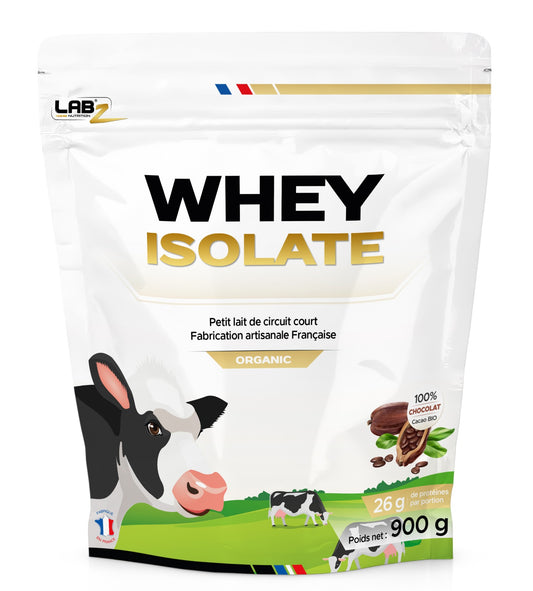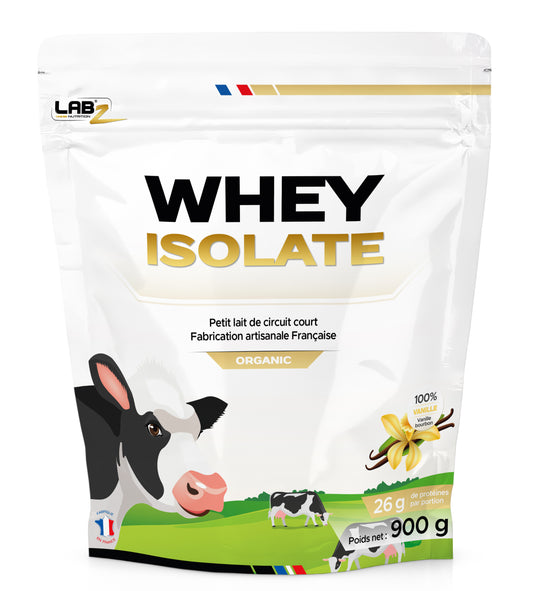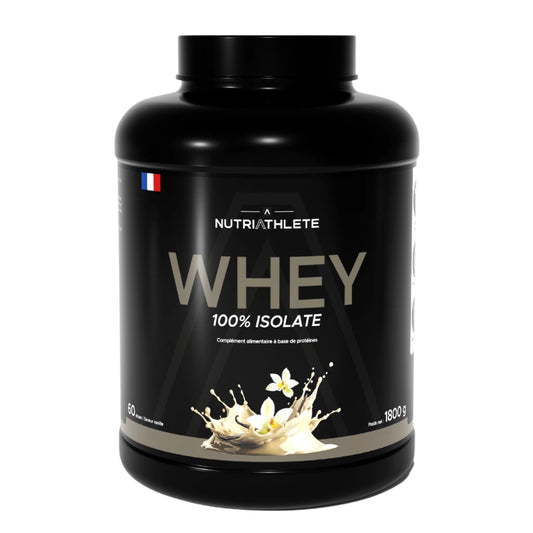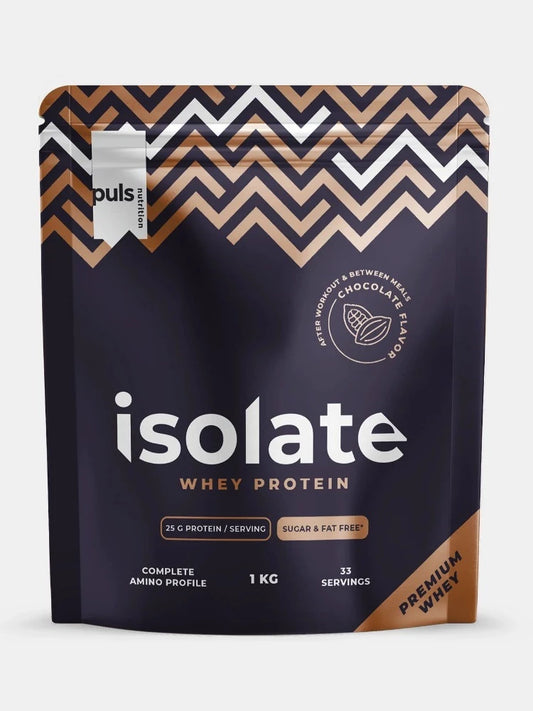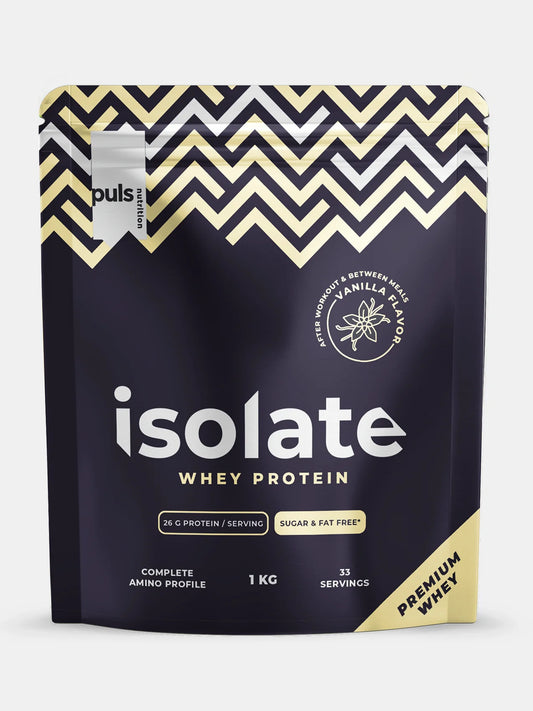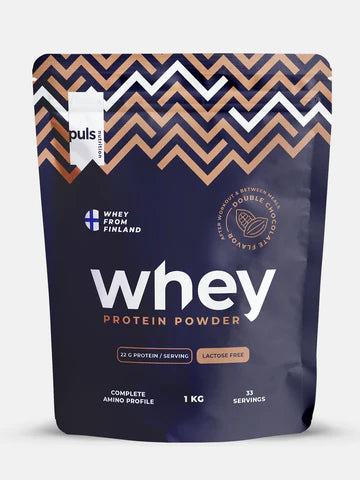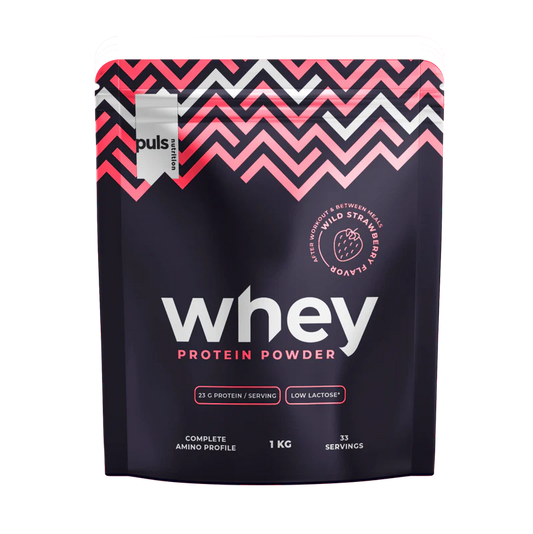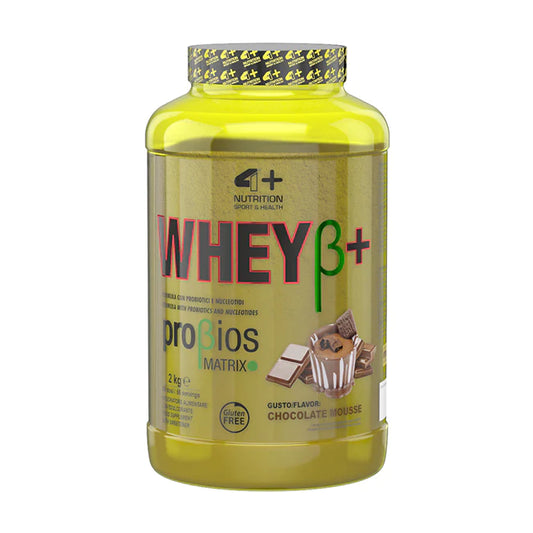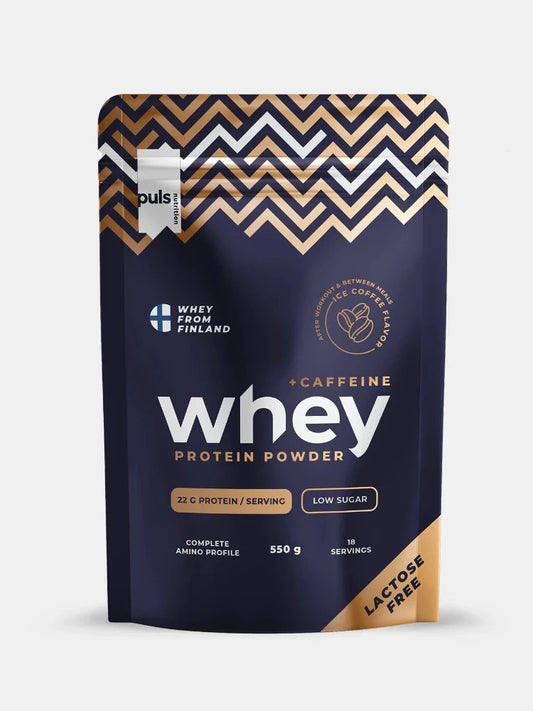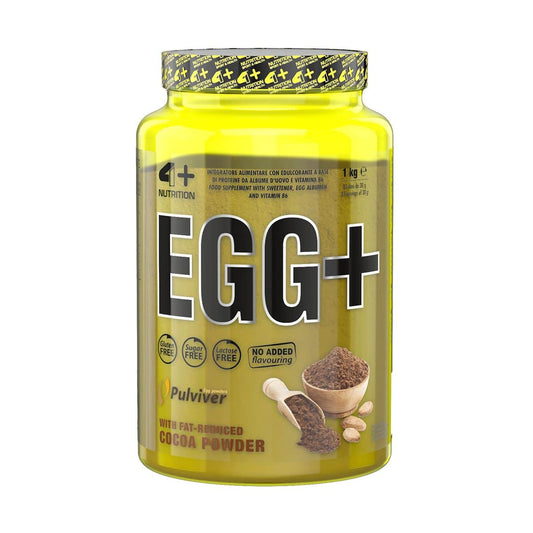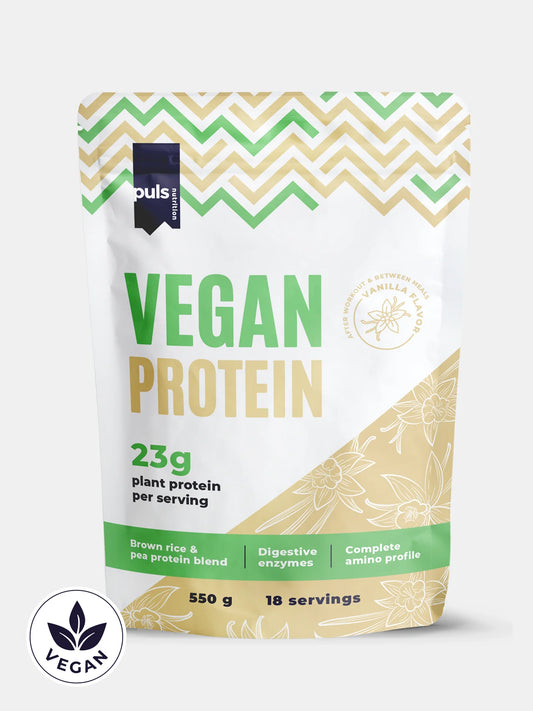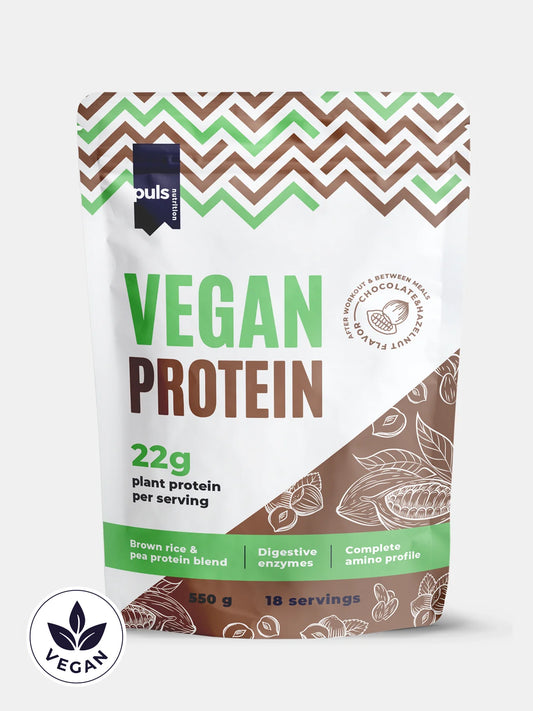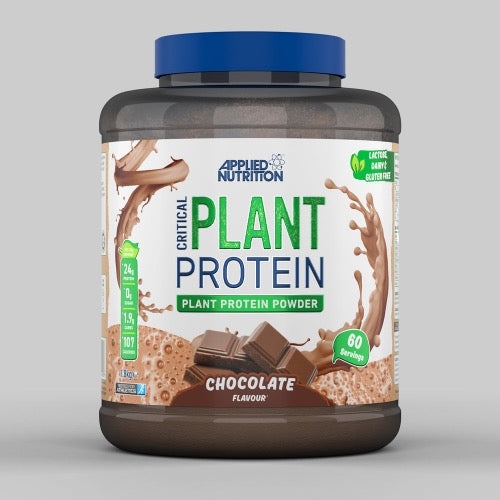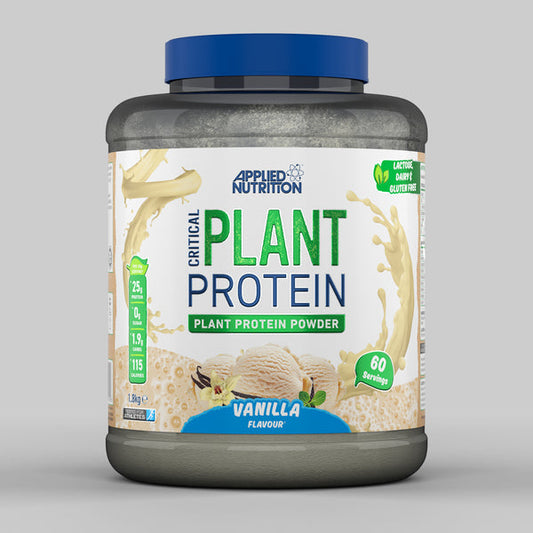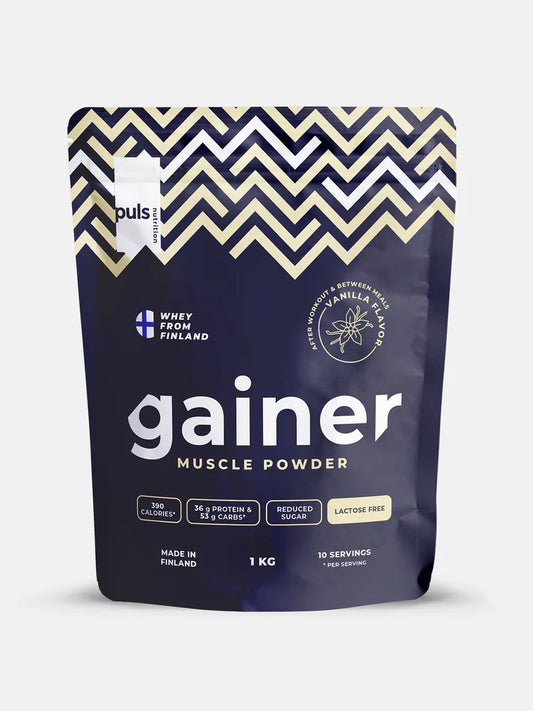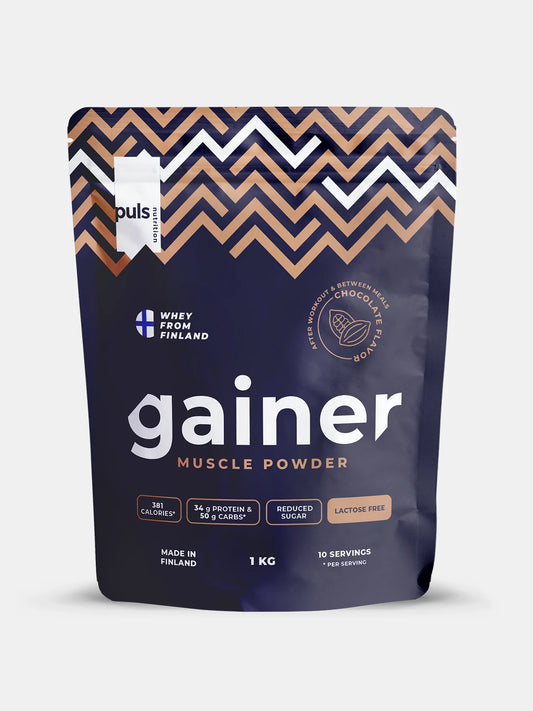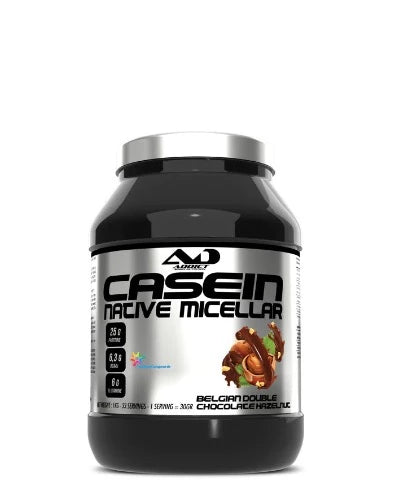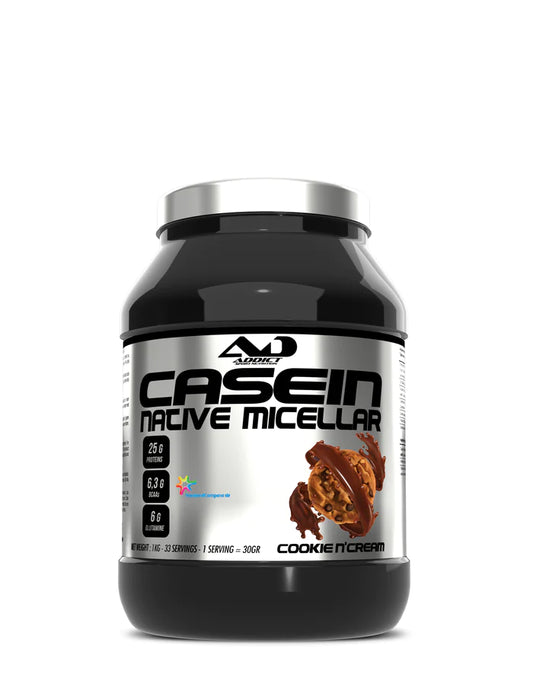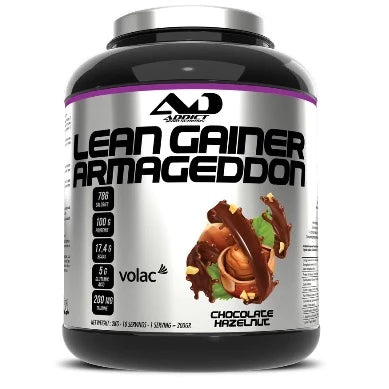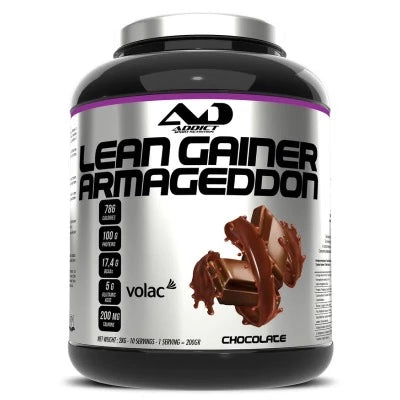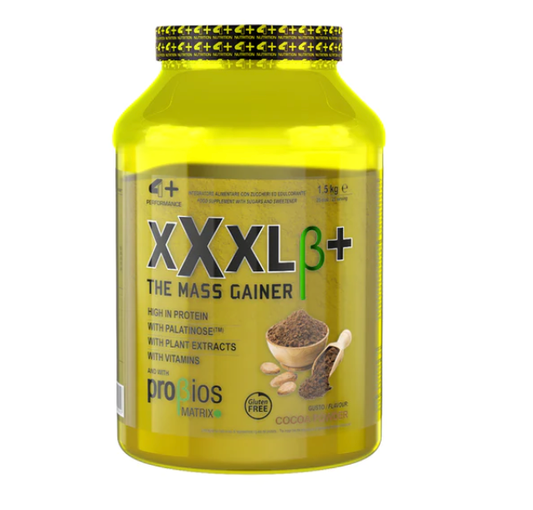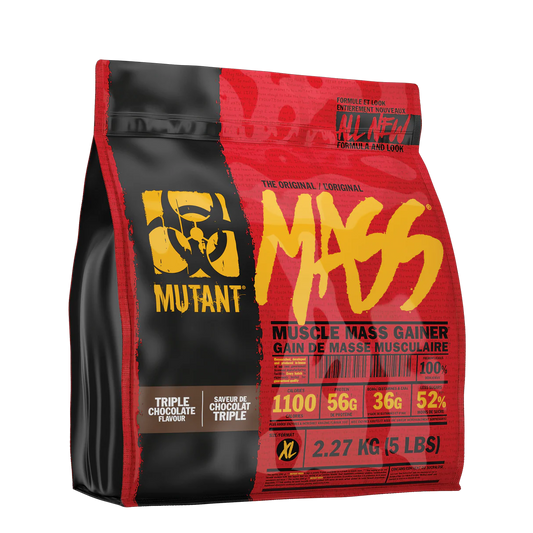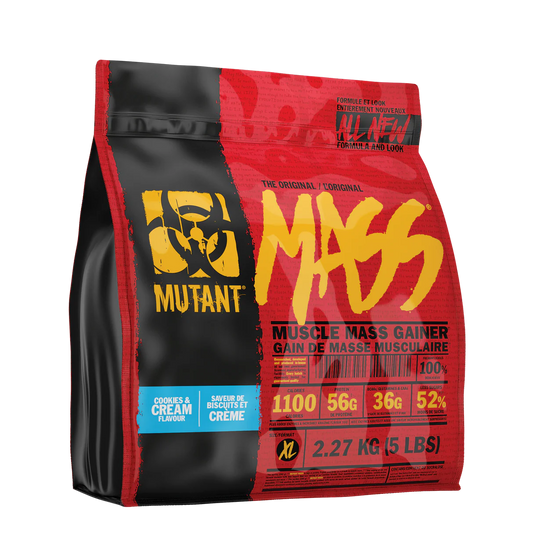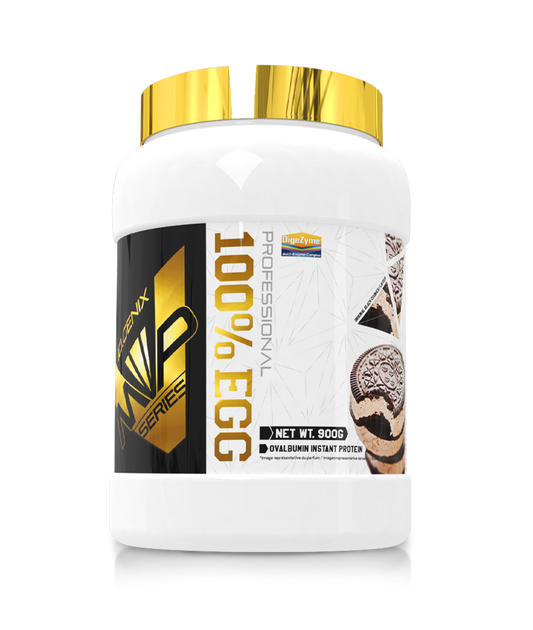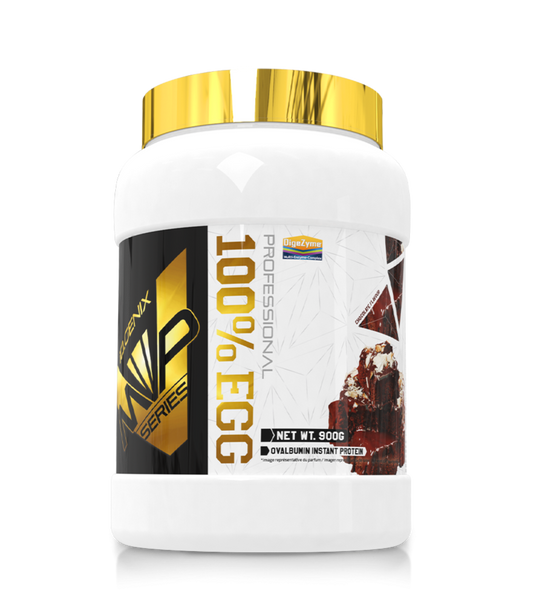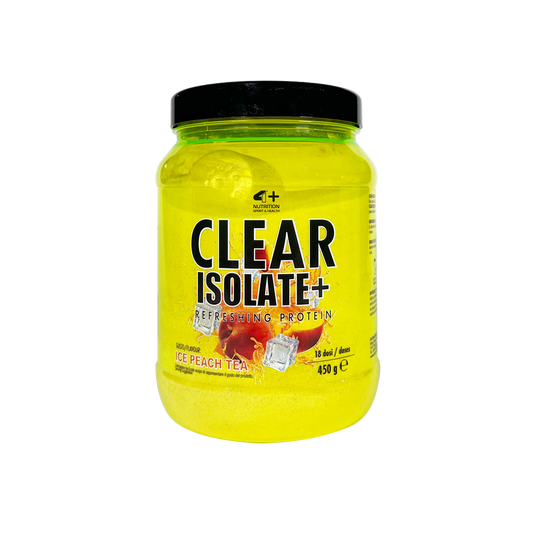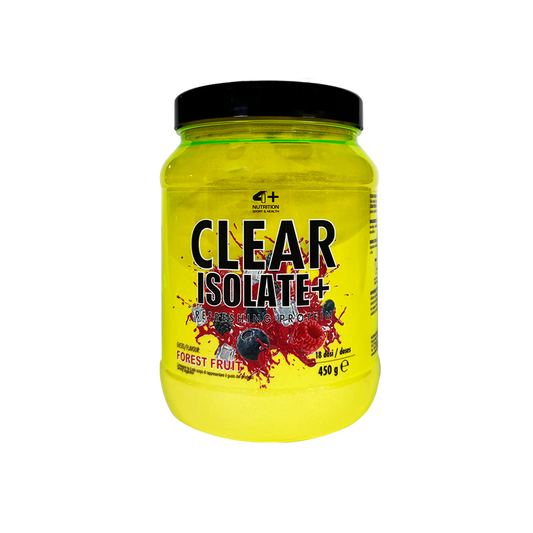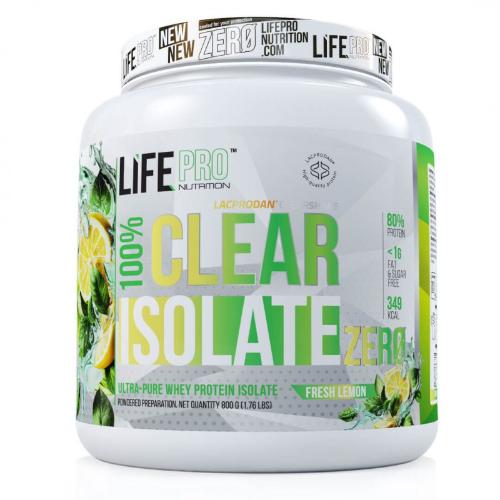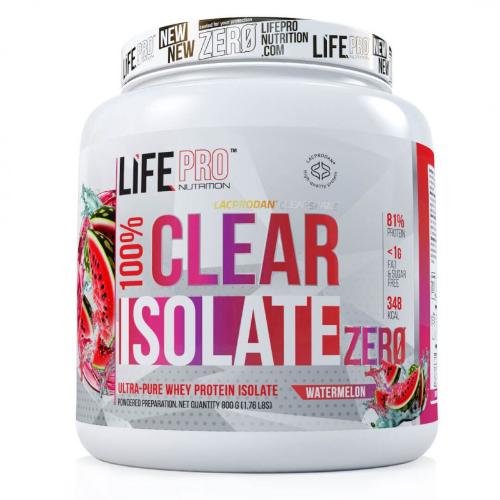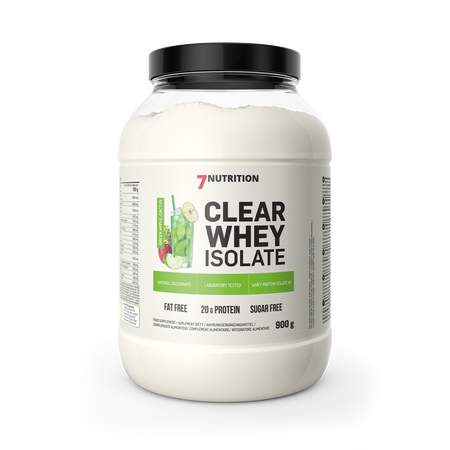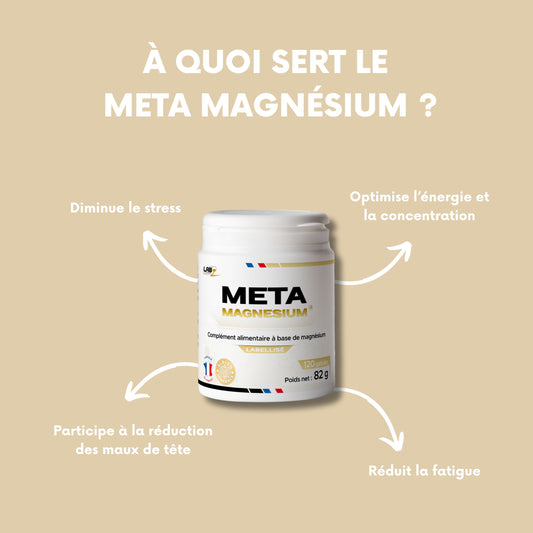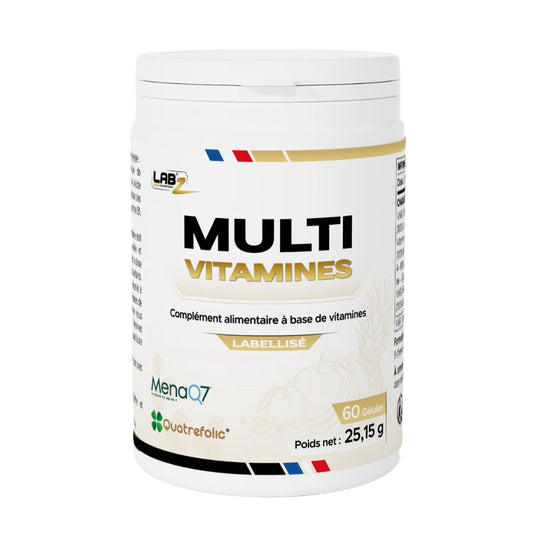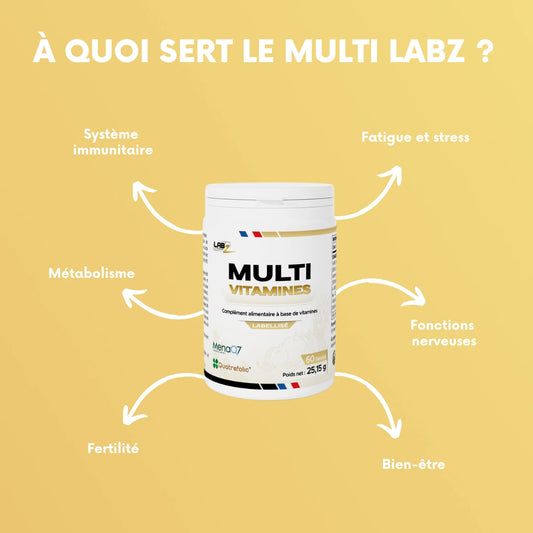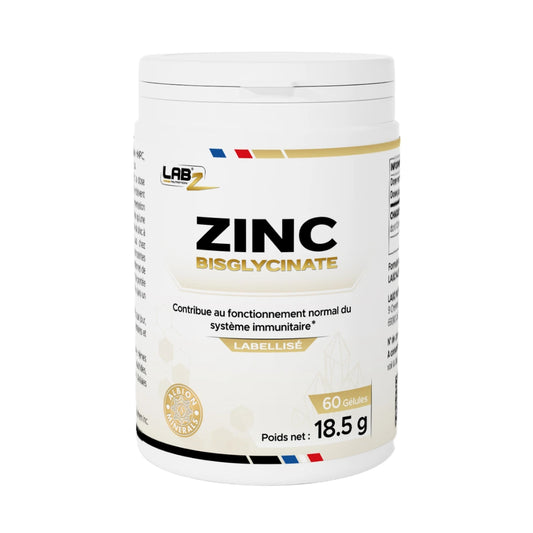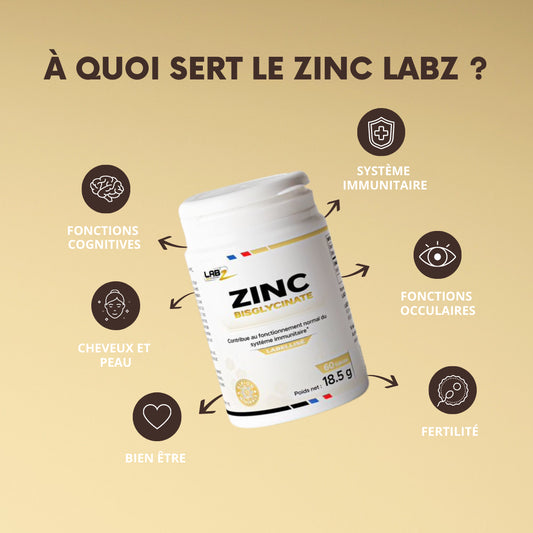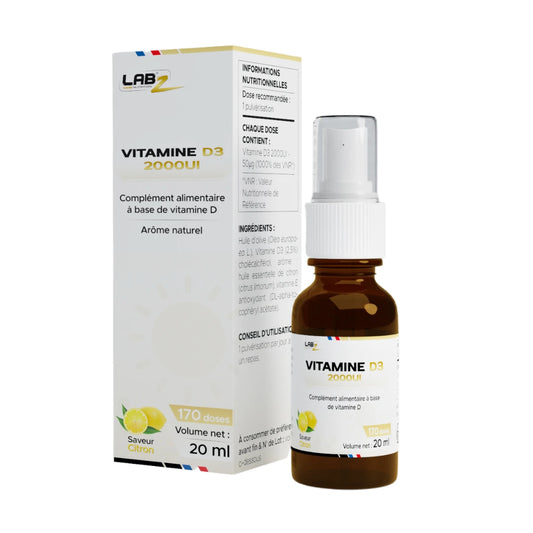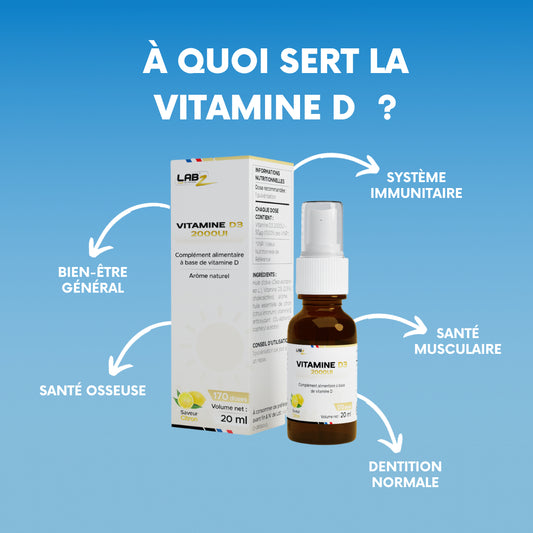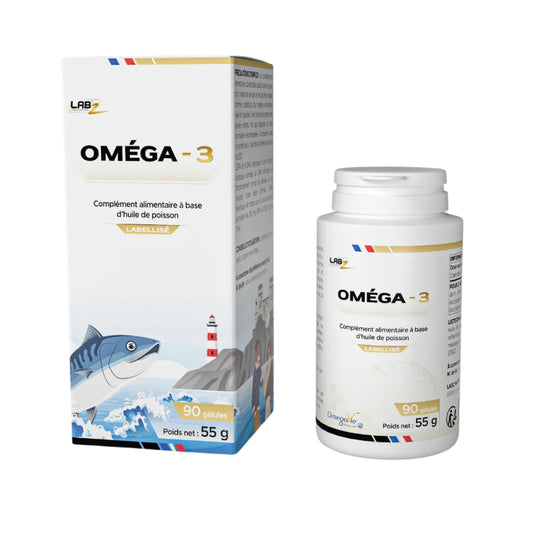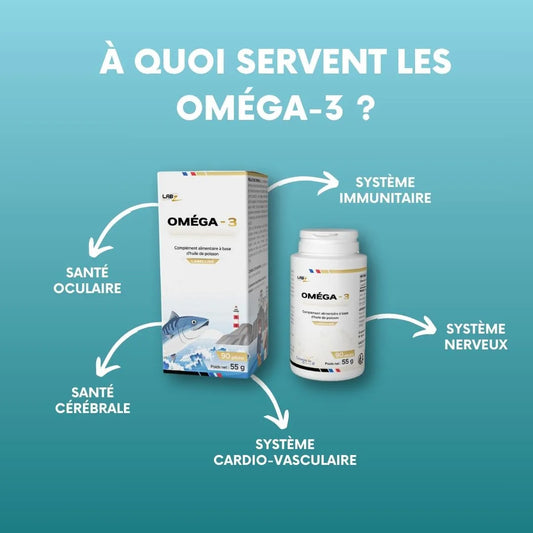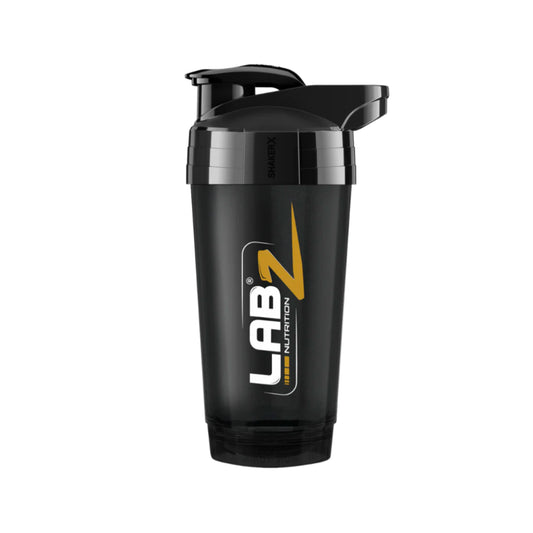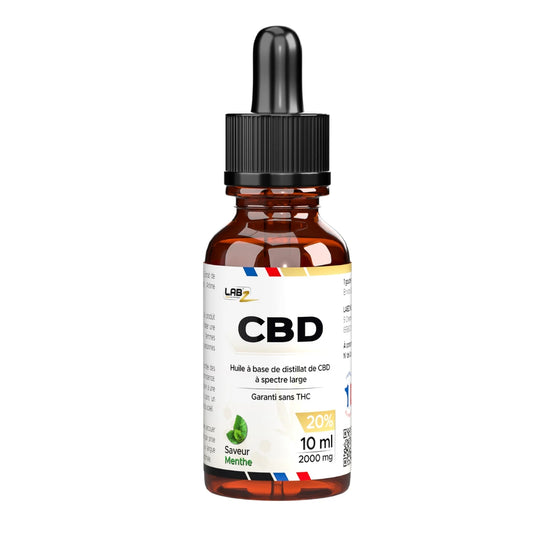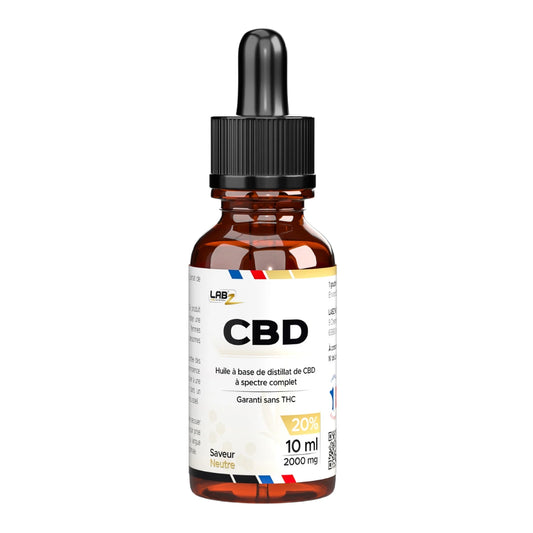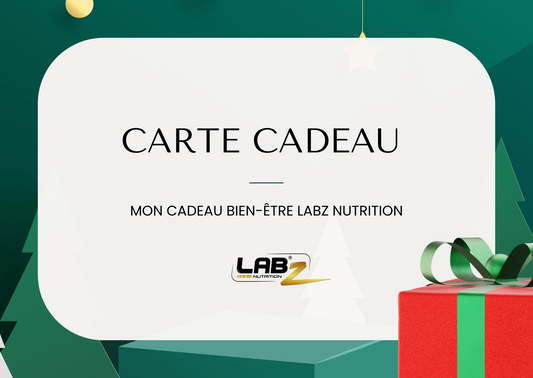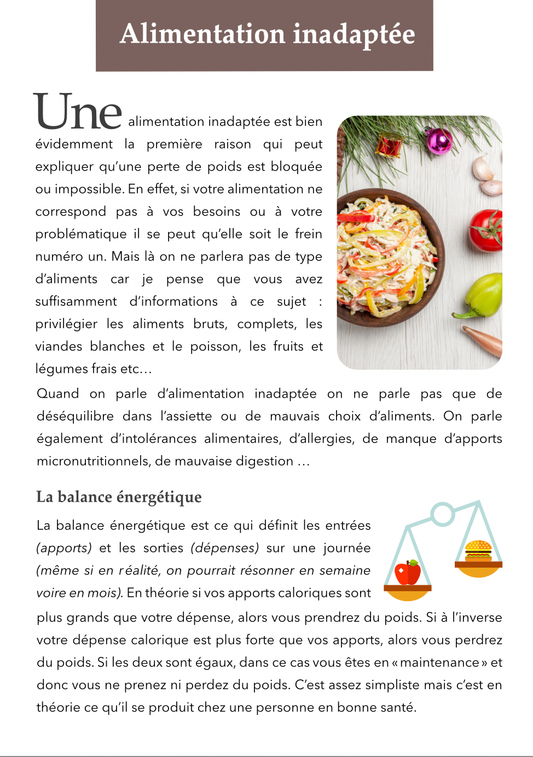How to choose the right whey protein
How to choose the right whey protein
This article is an excerpt from the training on dietary supplements that will be offered to you soon on the site (for purchase for individuals and offered for sponsored coaches). Please do not divulge the information (text and illustrations) contained in this article without the authorization of the author or without mentioning his name.
***
We know very well what you are telling yourself when you read this title: "And come on... another article on how to choose your pot of protein which will tell me that you have to take isolate with 90% protein and up to 30 minutes after training so as not to miss the anabolic window…”! Not quite …
The purpose of this article is to allow you to be completely independent on the choice of your protein powder. Allow you to know how to read a nutritional label and make a quality judgment on the product you wish to buy. Knowing the different types of whey protein powder, recognizing a quality protein, knowing how to read a label, and spotting scams are all things you'll learn as you read on.
Important clarification: This article is not intended to denigrate or promote any particular brand. This is why we have chosen not to mention any brand. The goal is to educate the public to learn to read a label and choose, by oneself, a quality product.
I- The different types of whey protein
Whey is a co-product of the dairy industry (cheese processing or casein production) . It was born out of an environmental problem associated with the transformation of milk into cheese. Whey was previously discarded after separation from other milk constituents and generated a high polluting load (Vuillemard, 2018) . It corresponds to the liquid fraction recovered after milk coagulation.
Depending on the type of coagulation, two types of whey can be obtained:
sweet whey
It is obtained after skimming and drying fresh whey from the production of cheeses made by rennet-type coagulation (cheddar, mozzarella, Swiss ). On a dry matter basis, its composition is the same as that of liquid whey and its pH in solution is greater than 5.6.
Acid whey
It is obtained by drying fresh whey from the production of unripened cheeses made mainly by acid coagulation (with lactic acid bacteria), such as cottage and ricotta. Its composition resembles that of sweet whey powder except for its lower lactose content and a rich source of dairy calcium.
The different whey powders are used in several food products for their functional properties, in particular powdered proteins also called “Whey” in English.
Whey can come from two different sources:
whey cheese
It is made from whey from the cheese industry. The whey is recovered after coagulation of the milk by enzymatic method (rennet or lactic acid bacteria) or by chemical acidification (use of strong acids) , to recover the solid fraction (caseins) in order to manufacture ripened cheeses. The whey is then filtered, concentrated and purified. The lactose and fat content of the final product depends on the level or filtration technique used. Whey from cheese or casein is the main source of whey protein.
NB: Regarding whey from the Cheddar industry: The first thing that should be emphasized is that the practices carried out on whey from the Cheddar industry are mainly carried out on American territory (United States ). These practices are mainly the "bleaching" of whey to eliminate the "unpleasant" orange color in the eyes of the consumer. This method involves adding benzoyl or hydrogen peroxides (hydrogen peroxide) to remove beta-carotene (a natural pigment found in cow pasture grass and builds up in milk fat) that colors whey.
Although there is no opinion issued yet concerning a possible risk on the addition of these molecules in the whey to whiten it, there is room for questioning concerning the real usefulness of this kind of practice. Indeed, beta-carotene is a natural and harmless molecule that slightly colors whey. If the consumer therefore thinks that the color white is an indicator of purity, there is an error (at least in this case).
The added concern of whey coming from the cheddar industry, and therefore mainly from the United States (and even from the Asian market) , is the possible trace of hormones in the milk.
This is not possible in Europe due to regulations that prohibit the use of growth hormones. Moreover, the only additives used are mainly enzymes such as rennet and lactic ferments. French standards in terms of quality and control are very strict.
Nevertheless, it is impossible to know if the whey has been treated or not (unless you ask the manufacturer, who reserves the right, moreover, to answer you or not) . The molecules used for this type of bleaching are not subject to mandatory labelling.
Whey of dairy origin:
Unlike whey cheese, this one is made directly from fresh milk. They most often undergo microfiltration and not enzymatic coagulation. The whey is then pasteurized and then concentrated. The permeate resulting from the microfiltration of milk to concentrate micellar caseins is considered an ideal whey. It is obtained using membranes with pores of 0.1µm and is free of fat. It is also practically sterile and the proteins do not undergo any thermal, enzymatic or chemical treatment.
BEWARE of the term “native proteins”!
It is more and more common to see written on the labels of protein powder, "native proteins", "undenatured whey proteins" or "whey proteins from milk, undenatured". You should know that this kind of designations are only marketing. Why ?
Here is a simple and indismountable explanation:
"The product must be stabilized, so there is always pasteurization (compulsory), concentration and drying after concentration with a minimum impact on the whey proteins but sufficient so that they are no longer native in the strict sense". Jean-Christophe Vuillemard, researcher at the milk science and technology research center, Laval University, Quebec.
Pasteurization is a moderate heat treatment which is done at a temperature below 100°C and which aims to destroy enzymes and pathogenic bacteria in vegetative form ( Brucella abortis, Mycobacterium tuberculosis and Coxiella bumetii ).
A bit of physics and chemistry:
“ Protein denaturation is defined as a change in the three-dimensional structure of a native protein, either at the secondary, tertiary or quaternary level. This change can be caused by different physicochemical agents such as heat, acids, metals, etc. Among the physical agents capable of denaturing proteins, heat is the best known and most often used in the food industry. Most proteins denature irreversibly at temperatures above 75°C. Among the links stabilizing the structure of proteins, hydrogen bonds and hydrophobic interactions are the most influenced by temperature. Hydrogen bonds are destabilized by heat, while hydrophobic interactions are reinforced. Given the high number of hydrogen bonds involved in maintaining the secondary structure of proteins, heat will therefore have a significant impact on their denaturation . Department of Food Sciences, FSAA, Laval University, 2016.
As you will have understood, since pasteurization is a mandatory process for the health safety of milk products, whey proteins cannot be in their native state in the final product. Added to this are the various drying and concentration processes which also denature the proteins before they are potted.
“The only “native” product is a concentrate of TOTAL milk proteins (i.e. caseins + whey proteins) commonly called MPC (milk protein concentrates) but which is necessarily pasteurized then concentrated under vacuum and dried by atomization . These protein powders are therefore not 100% native, but the term native applies or is tolerated because the process used to concentrate the proteins is not “denaturing” like the precipitations formerly used and which limited the uses”. Jean-Christophe Vuillemard, researcher at the milk science and technology research center, Laval University, Quebec.
In reality, the only argument that sellers can put forward is that their concentrate (or isolate) comes from whey resulting from microfiltration and not from enzymatic coagulation and that this milk has not been thermized or pasteurized as it is done in cheese making. However, the process of pasteurization-concentration-drying after filtration means that they are no longer native.
“The only case where “native” could be used would be to sell the retentate immediately after concentration and without pasteurization. It would therefore be a raw whey protein retentate, which would be PROHIBITED”. Jean-Christophe Vuillemard, researcher at the milk science and technology research center, Laval University, Quebec.
Conclusion: It is very difficult to know if a whey is of cheese or dairy origin. It is the manufacturers who can have access to this information (since it is they who buy their raw material) . However, the latter are not always supplied with a single type of raw material. Sourcing can come from both origins depending on the price and availability of the product. Moreover, it is not useful to persist in knowing if your whey is dairy or cheese, the difference remains minimal and will have no impact on the results that we can expect. It is more important to look at its composition (% of proteins, aminogram, vitamins…) .
Whey powder is obtained by simple concentration (vacuum evaporation, crystallization) and drying (atomization, grinding and sieving) . Then, the proteins contained in the whey are generally concentrated by various industrial processes in order to obtain powders whose protein content varies from 25 to 97%.
Protein concentration processes most often involve techniques such as reverse osmosis , electrodialysis , ultrafiltration , microfiltration or ion exchange chromatography . These processes make it possible to obtain different types of protein powder which are concentrates (CPL) or "concentrate" in English, isolates (IPL) or "Isolate" in English and hydrolysates (HPL) or "hydrolyzed" in English .
In general, ultrafiltration and microfiltration are the concentration methods used to obtain CPLs, whereas ion exchange chromatography is better suited to the production of IPLs. The different filtration and/or concentration techniques used in the whey industry are presented below. Depending on the type of whey desired, these treatments can be combined or even supplemented with lactose demineralization or crystallization (in order to produce lactose-free whey ) :

Reverse osmosis:
This is the first step in milk filtration. It consists of separating water (and soluble waste) from "solid" constituents such as bacteria, lipids, caseins, whey proteins, sugars, minerals... In this process, the pores of the membrane are small and the pressure very high. This therefore allows only the permeate consisting of water to pass (Vuillemard et al., 1989)

Nanofiltration:
This is a filtration process that consists of separating the minerals from the other milk constituents.

Concentration of proteins by ultrafiltration:
It is a filtration technique that consists of the separation of water, dissolved salts, lactose and acids from the protein fraction and fat. Unlike concentrates obtained by thermal denaturation, ultrafiltration is a "softer" process which allows the proteins to be preserved in a more native state. Nevertheless, the concentration of contaminants is higher and does not allow, for example, its use in infant formula. In addition, the concentration of residual lipids as well as of certain metals (iron and copper) which catalyze oxidation reactions towards proteins, can cause the appearance of undesirable flavors (De Boer et al., 1977) .
The protein content of concentrates via this method can vary from 35% to 80% depending on concentration and diafiltration factors. Indeed, the protein content increases according to the concentration factor but it is difficult to obtain concentrates whose protein content is greater than 65%. Additionally, ultrafiltration concentrates both whey proteins and lipids. Consequently, the fat content of the concentrates obtained by membrane separation is proportional to their protein content (fat/protein ratio of about 0.09) . Diafiltration is therefore used to increase the final percentage of proteins (greater than 80%) .
NB: Ultrafiltration and diafiltration of previously delipidated whey make it possible to obtain isolates (partially delipidated concentrates can also be obtained) whose protein content is greater than 90% (serum proteins can also be isolated by ultrafiltration from of a milk microfiltration permeate).

Microfiltration:
Its objective is the separation of milk proteins into a flow of caseins and a flow of whey proteins. The process involves passing skimmed milk through a membrane with pores of a size chosen to retain the casein micelles and allow the smaller whey proteins to pass. A diafiltration ( washing ) process is performed afterwards to increase the yield of whey protein.

Protein concentration by thermal denaturation:
This method aims to isolate whey proteins in the form of a concentrate called lactalbumin. Whey proteins are denatured at temperatures above 65°C. However, to maximize production yields, it is necessary to heat whey to temperatures above 90°C. The whey is then chilled to complete protein aggregation. A washing is then carried out in order to eliminate the salts and the lactose and the proteins are recovered then filtered on a drum and dried by atomization.

Ion exchange chromatography:
It is a process (also called Spherosil process) used to extract proteins to a high level of purity. In contact with an ion exchange resin, the whey proteins are adsorbed (they are retained on the resin) , while the other constituents are eliminated by rinsing. The absorbed proteins are recovered following elution with a hydrochloric acid solution.
Another technique is to place the whey in an ion exchange column. The proteins are then detached by washing with water and then concentrated by ultrafiltration and then finally dried by atomization (Anonymous, 1982) . The protein extracts obtained by this method display protein contents above 90%.
Here, the advantage, compared to ultrafiltration, is the virtual absence of residual lipids and oxidizing agents. In addition, the organoleptic properties are better due to the absence of development of undesirable flavors by oxidation. This technique is most commonly used in the production of whey protein isolates.
Hydrolysis:
There are different types of hydrolyses. The main purpose of hydrolysis is to reduce the milk proteins (caseins and serum proteins) to the state of peptides or even free amino acids. Chemical hydrolysis makes it possible to carry out complete hydrolysis of proteins into amino acids by heating either in an acid medium (acid hydrolysis) or in an alkaline medium (alkaline hydrolysis) . Nevertheless, chemical hydrolysis has certain disadvantages such as the destruction of tryptophan, serine and threonine (amino acids) and even the formation of undesirable compounds (derived from amino acids) (Vuillemard et al., 1989).
Another type of hydrolysis exists: enzymatic hydrolysis . It makes it possible to modify the functional and nutritional properties and to preserve the nutritional quality of proteins. Unlike caseins, whey proteins are resistant to several enzymes. The heating of whey proteins is necessary before carrying out the hydrolysis because it allows the unfolding of the globular structure of the proteins and therefore to expose the groups sensitive to the enzymatic action. The choice of enzymes determines the peptide profile of the hydrolysates. The degree of hydrolysis, expressed as a percentage, represents the proportion of the peptide bonds of a protein which have been hydrolyzed. Chromatographic techniques on an ion-exchange resin make it possible to purify the peptide extracts, but the cost of these processes is very high and these applications are reserved for peptides with very high added value.

As said previously, all these processes make it possible to obtain different types of products and in particular dairy ingredients with a high content of whey proteins, more commonly called: "whey". There are 3 types which differ in their protein, mineral, lactose and fat content as well as in their method of manufacture (see above) :
Whey protein concentrates (CPL) or “whey concentrate” in English:
These are, as their name suggests, whey protein concentrates derived from whey obtained after removal of some of the minerals and lactose by various techniques (ultrafiltration, diafiltration, evaporation, spray drying) . We recognize CPL because they generally have a protein concentration that varies between 35% and 80%. Due to their lower protein concentration than other types of protein powder, they contain a higher lactose content and therefore cannot be consumed by people suffering from lactose intolerance (unless it is of a CPL made from delactosed whey) .
Whey protein isolates (WPI) or “whey isolate” in English:
Isolates are also whey protein concentrates but, unlike whey, contain a minimum of 90% protein and very low lactose, fat and lactose content. It is the purest source of protein.
Whey protein hydrolysates (HPL) or “whey hydrolyzed” in English:
Hydrolysates are hydrolyzed proteins, that is to say, reduced to the state of peptides or free amino acids. This process is very similar to the process of digestion and generates easily absorbed peptides. They therefore have the advantage of being quickly assimilated at the intestinal level and therefore quickly used by the body in the processes of recovery and muscle synthesis (Kanda et al., 2014). The nature of the hydrolysates obtained depends on the hydrolysis conditions and the fractionation processes. However, the disadvantage of hydrolysates lies in their bitterness which increases with the degree of hydrolysis (DH). Thus, it is impossible to find a 100% hydrolyzed whey (the product would be inedible). Hydrolysates will therefore always be mixtures of isolates or concentrates with a certain percentage of hydrolyzed proteins in them. Generally, this percentage does not exceed 5 to 15% in most products on the market. The most hydrolyzed products (and therefore of very high quality) can go up to percentages of hydrolyzed proteins of 65-70%.
General Conclusion Part I: As you will have understood, there is a long way before your protein powder ends up in your pot. This is why these are ultra-processed products. Nevertheless, whey protein powder remains the most bioavailable and nutritionally interesting source of animal protein. This has also greatly interested industrialists who have made it a flagship product in sports nutrition, necessarily leading many agri-food industries to produce it. As with any product for which the merits are touted, myths are often heard leading consumers to ask themselves a whole host of questions about the quality of the products they consume. Regarding whey proteins, the questioning is often about the origin of the whey, the type of manufacture or even the name of the supplier! Some of these questions may turn out to be legitimate while others turn out to be totally useless:
– We have seen that “native” whey was a term that is incorrectly used and that whey can NEVER be native because of manufacturing techniques that require pasteurization (at a minimum) which necessarily denatures the proteins by heat.
– We have seen that a whey protein is dairy or cheese, the differences in terms of protein synthesis and sports results are minimal. In addition, it is almost impossible to know and verify whether a whey is of dairy or cheese origin.
– We have seen that the practice of bleaching whey was commonly used in foreign countries (cheddar industries) and that, in any case, the molecules used to bleach it have not, to date, demonstrated any risks for health.
– We have seen that concentration and filtration techniques make it possible to determine the greater or lesser content of lipids, lactose, minerals and proteins contained in the final product.
– We have seen that French regulations are very strict, which minimizes health risks or even the presence of undesirable products such as certain additives or traces of growth hormones.
Finally, I would conclude by saying that there are around ten milk protein producers (large producers and small manufacturers) in Europe. The whey found on the European market are therefore mainly made from their raw materials. Subject to very efficient European regulations, it is therefore useless to have too many doubts about the quality of their products. It is therefore in the next parts of this article that we will see what are the real questions that we should ask ourselves before buying a whey protein powder (because yes, there are still scams on this market!) .
References :
Anonymous. (1982). Super protein from acid whey. Food Eng. 54(3), 96-97.
De Boer, R., De Wit, JN & Hiddink, J. (1977). Processing of whey by means of membranes and some applications of whey protein concentrate. J. Soc. Dairy Technol, 30(2), 112-120.
Kanda, A., et al. (2014). Post-exercise impact of ingested whey protein hydrolyzate on gene expression profiles in rat skeletal muscle: activation of extracellular signal-regulated kinase 1/2 and hypoxia-inducible factor-1α. British Journal of Nutrition , 111(12), 2067-2078.
Vuillemard, JC., Gauthier, S. & Paquin, P. (1989). Ingredients based on dairy proteins: obtaining, properties and uses. Milk, INRA Editions, 69 (4), pp.323-351.
Vuillemard, JC. (2018). The Dairy Ingredients , Science and Technology of Milk (pp. 387-441). Laval University Press .
Yadav, JSS, et al. (2015). Cheese whey: A potential resource to transform into bioprotein, functional/nutritional proteins and bioactive peptides. Biotechnology Advances, 33(6), 756-774.
II- Knowing how to read the label of a jar of whey
Now that you know how to recognize the different types of protein powder that exist and that you have finally let go of the idea that “native proteins” are better than “denatured” proteins, let's move on to the sinews of war: nutritional labels!
They are the only means that you have to know the quality of what you buy (even if, you are free to seek further information on the websites of the manufacturers or even of the raw materials).
A bit of regulation:
Protein powders and dietary supplements are functional foods. Protein powders are DDAPs (foodstuffs intended for particular diets) . There are no specific regulations for functional foods. Nevertheless, there was a big change in 2011 by a regulation (INCO) which entered into gradual application until December 2016. All food products must have a nutritional declaration.
The labeling of foodstuffs in France is highly regulated. It informs the consumer about the nutritional qualities of the food. It also makes it possible to enhance the nutritional qualities of this same food. It applies in part to the DDAPs but becomes mandatory if there is a nutritional or health claim on the product or its advertising and if there are nutrients added to the formulation. It must obey strict rules of presentation harmonized in Europe.
The nutritional declaration of the product informs the consumer about the quantity of nutrients and the energy value of the product. The declared values are average values established on the basis, as the case may be:
– the analysis of the food carried out by the manufacturer
– the calculation made from the known or actual average values relating to the ingredients used
– the calculation made from generally established and accepted data
In short, you will understand, the nutrition label is the first thing you should look at before buying a product (whatever it is!).
We are now going to present step by step, the things to look at, to detect and above all, to analyze!
Step 1: Look at the table of nutritional declarations
As explained above, the nutritional information table is a first indicator of the quality of a product. In the case of protein powders, some of this information makes it possible to recognize: the type of protein powder contained in the product, the degree of filtration of the product , the lactose and mineral content.

Example and comparison of the nutritional declarations of two different types of whey protein powder.
– The first thing to look at in terms of the nutritional declaration is the percentage of protein in the product . Indeed, as explained in the previous part of this article, the different types of whey differ in their protein content in the final product. A whey protein concentrate will have a protein percentage between 35% and 80% while an isolate will be around 90% (+/- 5%). Thus, the protein percentage (g of protein per 100g of product) indicates the type of whey you are dealing with.
– The second thing to look at is the carbohydrate content of the product . Indeed, it is important to know that in whey protein powder, the entire carbohydrate fraction is represented by lactose. Thus, when you see written: 5g of carbohydrates it is generally 5g of lactose (unless there are other carbohydrates added in the composition of the product). The carb content also tells you how filtered the product is. The more a product is filtered (and by the way, rich in protein), the fewer carbohydrates there will be. Thus, it is logical to find a lower carbohydrate fraction in whey protein isolates than in concentrates. This also allows you to indicate to people who are lactose intolerant, whether they can consume the product or not (unless lactase type digestive enzymes are added to the product).
– The third thing to look at is the fat content of the product . Lipids are generally the macronutrients found in lower amounts in whey protein powder. As with carbohydrates, the lipid content provides information on the degree of filtration of the product. The further the filtration, the less lipid fraction there will be in the final product. There are generally more lipids in a whey protein concentrate than in an isolate (as can be seen from the example above).
Step 2: Look at the list of ingredients
The composition of a whey should not be very long. Indeed, it is basically a simple product. The more ingredients there are, the more questions you have to ask yourself (this sentence is also valid for many other foodstuffs) . The ideal composition of a whey would be:
Whey protein (concentrate, isolate or hydrolyzate)
Dye(s) ( natural is always better)
Aroma(s) (natural is always better)
Emulsifier(s) (mainly soy lecithin)
Sweetener(s) (preferably sucralose or stevia)

Example of an ideal composition for a whey protein (bromelain = mixture of enzymes)
Whey protein is enough on its own. There is no need to add free amino acids (amino spiking or enrichment, see below), carbohydrates such as dextrose, maltodextrin, etc. or even “milk protein mixes”.
The added ingredients that may be of interest are digestive enzymes (lactase, protease, cellulase, bromelain, papain, etc.) such as you can find on certain protein powders with the Digezyme® or Probioxβ® labels.
Likewise, it is important to look at the order of the ingredients in the composition. The ingredients are listed in descending order. The first ingredient is the one found in the greatest quantity in the product. You may find protein powders with “milk protein blend” listed first. If it's a mixture of isolate, concentrate and hydrolyzate, why not. However, if there is presence of whole milk proteins, caseins, caseinates etc… then it is no longer really a whey protein!

Example of a list of ingredients for a "poor quality" whey (non-French) with the addition of other ingredients and the presence of amino spiking
Step 3: Detect the presence of amino spiking
Definition : Amino spiking or “protein doping” is an artificial inflating of the protein weight in the product by adding amino acids that are cheap or have less utility in protein synthesis.
The interest for the industrialist is to add inexpensive amino acids (unlike other amino acids or even the protein itself). This makes it possible to "inflate" the nitrogen content of the product which allows the company, at the time of the checks, to write on the label, a certain grammage of proteins (example: 90g/100g) whereas it does not there is actually a lower weight of raw material ( whey ) in the final product (example 70g/100g in reality).
How is it possible ? And regulatory level?
You should know that before being put on the market, whey products are tested for their protein content. Companies therefore send their products to the laboratory in order to perform nitrogen assays.
The principle : “Mineralization of organic matter by sulfuric acid in the presence of a catalyst, alkalinization of the reaction products, distillation and titration of the ammonia released. The Kjeldahl nitrogen in the sample is first transformed into ammonia by acid digestion in a digestion batch. The addition of a strong base makes it possible to release the ammonia which is then entrained by water vapor then then trapped in a solution of boric acid. The ammonia is then dosed with a sulfuric acid solution of known strength. The equivalence point is identified by the change in color of an indicator. The crude protein content of the product is obtained by multiplying the value obtained when determining the nitrogen content by the factor 6.38 for dairy products”. FASFC
The problem is that although proteins are high in nitrogen, amino acids (the building blocks of proteins) are too! Thus, whether the product is rich in “whole” proteins or in free amino acids, the final nitrogen content will be the same and the final estimate as well.
In fact, there are guidelines that pure or free amino acids cannot be declared as a source of protein (Source: FDA). However, there is no specification for protein powders to which additional free amino acids have been added.
Manufacturers therefore use this “legal loophole” to lower their production costs while increasing their resale price.
Why is this disadvantageous for the consumer?
One might wonder why the addition of free amino acids is a “crime” or at least disadvantageous for the consumer. That's right, after all, proteins are made up of amino acids that are found in their free state after digestion...
The problem is that whey proteins are rich in essential branched chain amino acids, also called: BCAAs. These BCAAs are known to play an important role in protein synthesis (and therefore in muscle reconstruction after exercise). Of course, you will suspect that the manufacturer, when he decides to make amino spiking, is not going to add this type of amino acid, which would cost him more than the basic raw material. Thus, it adds others such as taurine , glycine , alanine, glutamine or even creatine , which have lesser or even non-existent roles in muscle metabolism. The goal is therefore simply to make the consumer believe that the product will provide him with a certain amount of whey protein and therefore of interesting amino acids, when in reality, it will provide him with less than expected and more acids. “unnecessary” amino acids.
NB: Some manufacturers try to slip through the cracks of amino spiking by passing off their practice as enrichment. Indeed, some wheys are said to be “enriched” with BCAAs (our famous amino acids useful for protein synthesis). However, remember what I said before: “Whey protein is enough on its own!”. So, do you doubt that the famous BCAAs added to the formulation are of poor quality, certainly from exotic markets where the expiry date has passed or the origin of the raw material is not ideal (bird feathers, human hair... )
How to detect this type of method?
Now that you know what to expect in terms of amino spiking, it's important to know how to spot it! Here are some clues and advice that can help you detect this type of practice:
1. The price:
A whey that is significantly cheaper (for the same volume of final product) than another on the market (similar in terms of composition and protein content) is a sign of the potential presence of amino spiking. To give an order of price, a whey protein isolate at less than 30-35€ deserves to be examined more closely...
2. Composition:
Sometimes you just have to look at the composition of your protein to see the addition of free amino acids to the list of ingredients (see example below). They can be labeled alone or as a “mixture of amino acids”. Also, if they appear at the top of the list, it means they have been added in large quantities…

Example of amino spiking (adding a mixture of free amino acids)
3. The aminogram:
The aminogram of a food is its amino acid composition. Remember, amino acids are the building blocks of proteins. Proteins are assemblies of peptides, themselves composed of assemblies of amino acids. It is these amino acids that play a physiological role in the body. Thus, the aminogram makes it possible to see the content of each amino acid in the product consumed (and therefore to estimate the benefits that the consumption of the product in question will have). The aminograms of whey proteins (depending on whether they are concentrates or isolates) are more or less similar.
So, if you read amino acid levels that are much higher than the others, it may mean that free amino acids have been added. As mentioned above, the amino acids often added and whose content you risk seeing increased are taurine, glycine, glutamine, creatine or even alanine.
A little hint about taurine: You should know that this amino acid is not naturally present in whey proteins (or in too low a quantity to be measured and displayed on the aminogram). So, seeing its little name appear on the list of amino acids in your protein powder should give you a hint. You usually see its name appear in the ingredient list in this case as well.

Comparison between two aminograms of whey protein powder.
Little hint about glycine: If the glycine content is higher than that of leucine, there is something fishy! Leucine is found in large quantities in whey proteins (which make it particularly valuable in sports nutrition!) but not glycine. Thus, it is not normal to find a level of glycine higher than leucine.

Example of amino spiking visible on an aminogram of whey protein powder. Glycine is in greater quantity than leucine
It is quite difficult to detect amino spiking via the aminogram. Some manufacturers do not display it or make it available to the consumer. This is not mandatory. But if you have it available, it can reveal a lot!
4. The presence of certain phrases:
On some products, small sentences can be written and allow the presence of amino spiking to be detected. These are phrases present on the packaging, at the back of the jar, on the website, etc. You can for example find phrases such as: “exclusive blend of amino acids”, “enriched with amino acids”, “mix of essential amino acids” and so on…
And because an image (or two!) your thousand words:


Example of typical phrases that indicate the presence of amino spiking or free amino acid enrichment
Step 4: Look at the raw material source
The last thing you can do to assess the quality of your protein powder is to research the source of the raw material used. This allows you to know where the milk from which the whey comes comes from (grass-fed cows, without antibiotics …) even if as explained in part I of this article, the whey certainly comes from a European factory which must meet very strict quality and control standards.
The presence of a quality label also makes it possible to guarantee the traceability of the product, the validation by analyzes of the real protein content, the absence of contaminants, etc. Often, the quality labels have obtained prices validating the quality of their raw material. or for their quality and safety approach.
General conclusion part II: We know that the quality of our food reflects the quality of our health. The same goes for your supplements. An optimal quality of your protein powder will allow you on the one hand to be assured of obtaining the benefits stated by this product, but also of not endangering your health with ingredients of poor quality, expired, bringing contaminants. or others. Market scams are hard to spot. Nevertheless, these few indications mentioned above will allow you to better compare the different products available and above all, to choose them better!
III- The case of hydrolyzed proteins
The last part of this article (already very long, I grant you) will be devoted to hydrolyzed proteins. Indeed, there are also several things to analyze and find out about this particular type of protein powder. This part will be shorter, but we find more and more often this type of protein on the market and they are more and more popular for their improved bioavailability.
The main problem with whey protein hydrolysates is to know the degree of hydrolysis of the latter.
The degree of hydrolysis of a protein is the percentage of hydrolyzed proteins ( reduced to the state of peptides or free amino acids) contained in the final product compared to the percentage of total proteins.
The first thing to know is that the higher the degree of hydrolysis, the worse the organoleptic properties of the product (the taste will be bad). This is why a hydrolysis percentage of 100% would be foul and therefore inedible. The highest degree of hydrolysis that can be found (in very, very high quality proteins) is around 65-70% (but these are proteins at more than 50€/kg).The second thing to know is that DH is not often specified on protein jars. Indeed, manufacturers often hide from mentioning this kind of detail (you will better understand why right after) . Moreover, although the manufacturers use a quality raw material ( example Optipep® which offers a whey protein hydrolyzate between 5-40% ), the percentage of hydrolyzate they choose for their product is often kept secret. It is therefore very difficult to know the true degree of hydrolysis of a protein powder unless the manufacturer specifically specifies it.
Thus, you will have understood it is difficult to really know the value of your whey protein hydrolyzate. And yet, consumers often pay the price thinking that their pot is rich in peptides and free amino acids which will assimilate quickly and will therefore be used more quickly by the cells for muscle resynthesis! In principle, yes. However, the reality is quite different.
Indeed, as for the use of labeled raw materials, there are no real standards concerning the percentage that the final product must contain in these products so that they can include the word "hydrolysate" or the name of the labels. on the label. In the case of protein powders, the manufacturer can very well mark that his product contains hydrolyzed whey, but not in what percentage. As I told you just before, a whey protein hydrolyzate can never contain 100% hydrolyzed whey protein because the taste would be terrible. Thus, it will always be marked “whey protein isolate or concentrate” then “whey protein hydrolyzate…”. It is therefore impossible to know, in this case, how much hydrolyzate the final product actually contains.
Thus, it is common to see manufacturers put a very low percentage of hydrolyzate ( example: 4%) in order not to increase the production cost of their products too much, and to specify that their wheys are whey protein hydrolysates. . They will therefore be able to sell their products under the term “Hydrolyzed Whey” and sell them for three times more than their almost similar isolates or protein concentrates.
In reality, I only managed to find three clues that can help to judge the hydrolysate content of the hydrolyzed whey that we buy:
1. The DH is specified: As simple as it may seem, when the degree of hydrolysis is specified (usually written this way: DH(25)) it gives the information directly and then there is no need to look far .
2. The taste of the product: As I said, a high degree of hydrolysis will necessarily result in a bitter and unpleasant taste of the protein. Hydrolyzed whey has a very specific taste and smell (you can't go wrong) . So, if your hydrolyzed whey tastes exactly the same as your isolate or protein concentrate, ask yourself questions about its percentage of hydrolyzate... Unless it's full of flavorings and added sugars (and again!) , this clue is often irrefutable. So remember one thing : the worse the taste (but still drinkable huh!) , the higher the degree of hydrolysis should be!
3. Price: As with isolates and concentrates, price is often indicative of quality. As I said, hydrolyzation is a more expensive process (because it's an additional technique to add to the whey production process), so we suspect that the manufacturer cannot afford to sell its hydrolyzed proteins at the same price as these other proteins. So beware of hydrolysates that are priced similarly to high-quality isolates and concentrates.
General conclusion part III:
Hydrolysates are increasingly marketed and promoted for their additional benefits on muscle recovery. Indeed, the hydrolyzation undergone by whey proteins makes it possible to obtain smaller peptides and free amino acids which can pass the intestinal barrier much faster than a whole protein which would require digestion (precisely to be hydrolyzed by digestive enzymes). This optimized absorption allows rapid availability of amino acids for the cells, which can therefore use them in post-workout protein synthesis. However, this hydrolysis process is an extra step in the production of traditional whey. Thus, it makes sense that these products are offered at higher prices than those offered for isolates or concentrates. However, as with any product, there are “scams” if we can say so, or at least manipulations made by the manufacturers in order to always make more profits. In the case of hydrolysates, it is on the degree of hydrolysis that everything will therefore be played. As we have seen, a whey protein hydrolyzate can never contain 100% hydrolyzed protein because the taste would be terrible. Thus, manufacturers are free to add the quantity of hydrolyzed proteins of their choice to the product without having any obligation to mention it. We've seen three little clues that can help you see if hydrolyzed whey contains a significant amount of hydrolyzed protein for it to claim its famous additional beneficial effects on protein metabolism. The price, the taste and/or the presence of the DH mentioned on the label are these three clues. Unfortunately, other than knowing the exact formulation of your protein powder, it will be difficult for you to know exactly if your hydrolyzate is a legitimate one.








 NOS PACKS
NOS PACKS
 Produits
Produits

 Santé
Santé
 Sport
Sport
 Cuisine saine
Cuisine saine
 Les produits Labz
Les produits Labz
